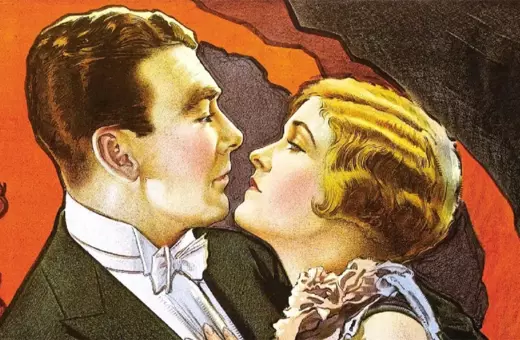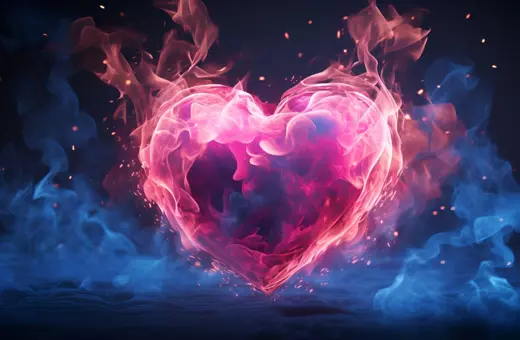In 20th century and contemporary film and television, the experience of orgasm is almost invariably depicted by images of waterfalls and fireworks. The classic example is probably the scene from Alfred Hitchcock’s To Catch a Thief (1955) in which a romantic dialogue between the two main characters, played by Grace Kelly and Cary Grant, is cross-cut with images of multicoloured fireworks. Many recent productions present analogous images. In The Notebook (2004) by Nick Cassavetes, the two lovers fall into one another’s arms in a pouring rain; and massive waterfalls frame crucial romantic encounters in several popular movies, such as Roger Donaldson’s Cocktail (1988), Michael Mann’s The Last of the Mohicans (1992) and James Cameron’s Avatar (2009). They allude to sexual climax, which thus appears as an explosive or overflowing event that falls upon us like natural upheavals and mechanical eruptions.
This echoes the literary and art historical portrayals of orgasm as ‘ecstasy’ or ‘ex-stasis’ in its various registers – aesthetic, religious-spiritual and existential. The images of overflow and explosion provide a naturalistic interpretation of the core idea of stepping outside oneself and transcending one’s limits that has fascinated Western culture since antiquity.
One type of the ecstatic experience of self-transcendence is visually captured by Italian Baroque sculptor Gian Lorenzo Bernini in his statue The Ecstasy of Saint Theresa (1647–1652), nestled inside the Cornaro Chapel of Santa Maria della Vittoria in Rome. Wrapped in the fabrics of her own robe, Theresa collapses, throwing her head back and closing her eyes. A cupid-like angel figure gently holds her up by one corner of her robe while aiming a golden arrow at her heart. The dynamically folding fabrics of Theresa’s own robe surrounding her from all sides and the bronze rays that rain down on her from an unseen source above convey the experience of ecstasy. The religious setting does not compromise the sensuous qualities of the scene but on the contrary draws attention to the fact that transcendence is involved in all forms of ecstasy - religious, aesthetic, erotic and sexual. A very similar image of a dynamic whirlpool of passion is presented in more prosaic form by Ang Lee’s Brokeback Mountain (2005): in a freezing cold night, two lovers are wrapped in multiple layers of moving fabrics that issue from their clothes, sleeping bags, tent canvases.
___
"The images of overflow and explosion provide a naturalistic interpretation of the core idea of stepping outside oneself and transcending one’s limits that has fascinated Western culture since antiquity."
___
In philosophical terms, these pictorial and verbal imageries can be understood by analysing the phenomenon of flow. In his Phenomenology of Perception, the French philosopher Maurcie Merleau-Ponty draws attention to the dual powers of flowing elements. He points out that on the one hand flows tend to spread out boundlessly, in several directions, but on the other, they also have the capacity to carry themselves like a stream in one direction, yet without limits. Crucially orgasm involves both forms of sensuous expanse and can thus be characterised as a multidirectional flow.



















Join the conversation